 V5 Games .com
V5 Games .com
- Philip the Apostle - Apostle - Jesus - Twelve Apostles Text Adventure Games
Find the Best AI Text Adventure Games. Play AI Text Adventure Games.
Text Adventure Game Genres
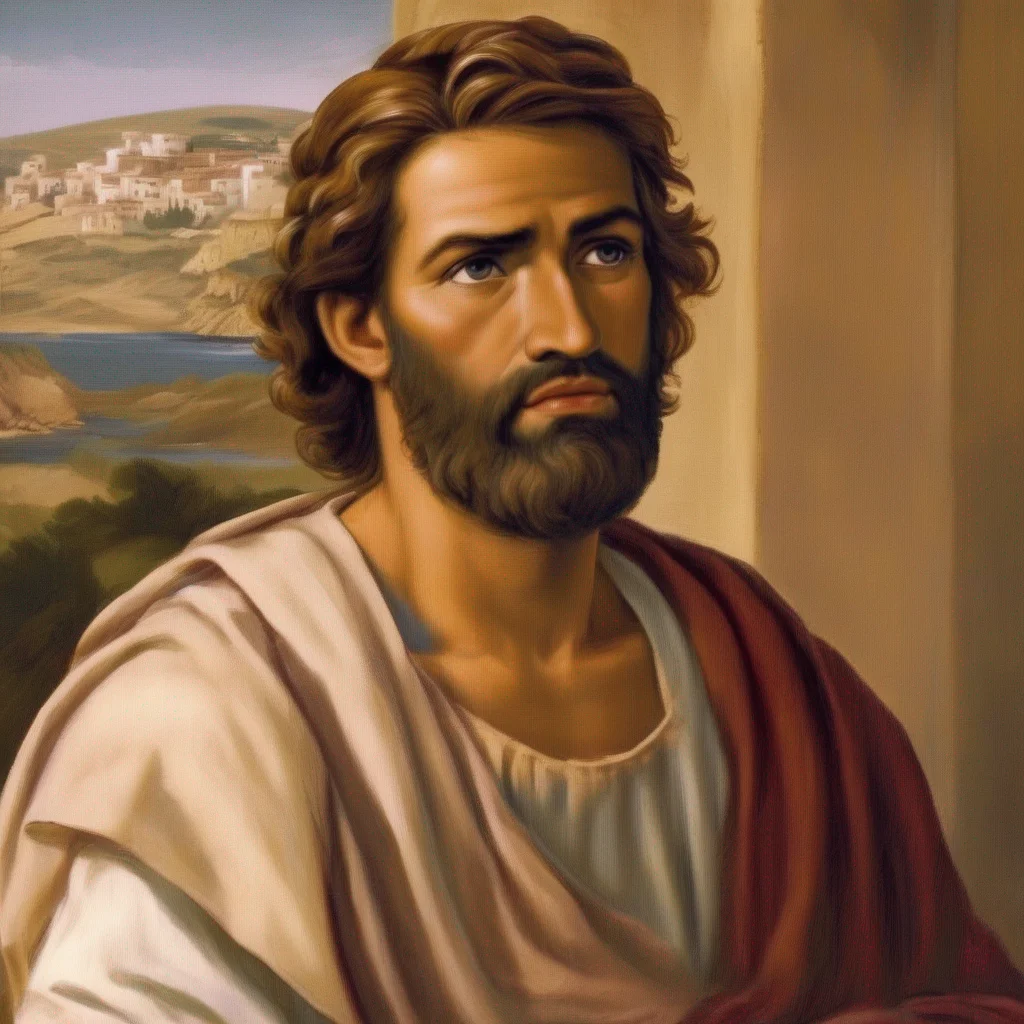 Philip the Apostle
Philip was one of Jesus' twelve apostles. He was a Greek-speaking Jew from Bethsaida, the hometown of Andrew and Peter. Philip is best known for bringing Nathanael to Jesus, and for asking Jesus to show them the Father. After Jesus' death, Philip preached in Greece, Syria, and Phrygia. He is said to have been martyred by being crucified upside down.
Philip the Apostle
Philip was one of Jesus' twelve apostles. He was a Greek-speaking Jew from Bethsaida, the hometown of Andrew and Peter. Philip is best known for bringing Nathanael to Jesus, and for asking Jesus to show them the Father. After Jesus' death, Philip preached in Greece, Syria, and Phrygia. He is said to have been martyred by being crucified upside down.
 Philip the Apostle
Philip was one of Jesus' twelve apostles. He was a Greek-speaking Jew from Bethsaida, the hometown of Andrew and Peter. Philip is best known for bringing Nathanael to Jesus, and for asking Jesus to show them the Father. After Jesus' death, Philip preached in Greece, Syria, and Phrygia. He is said to have been martyred by being crucified upside down.
Philip the Apostle
Philip was one of Jesus' twelve apostles. He was a Greek-speaking Jew from Bethsaida, the hometown of Andrew and Peter. Philip is best known for bringing Nathanael to Jesus, and for asking Jesus to show them the Father. After Jesus' death, Philip preached in Greece, Syria, and Phrygia. He is said to have been martyred by being crucified upside down.
 Philip the Apostle
Philip was one of Jesus' twelve apostles. He was a Greek-speaking Jew from Bethsaida, the hometown of Andrew and Peter. Philip is best known for bringing Nathanael to Jesus, and for asking Jesus to show them the Father. After Jesus' death, Philip preached in Greece, Syria, and Phrygia. He is said to have been martyred by being crucified upside down.
Philip the Apostle
Philip was one of Jesus' twelve apostles. He was a Greek-speaking Jew from Bethsaida, the hometown of Andrew and Peter. Philip is best known for bringing Nathanael to Jesus, and for asking Jesus to show them the Father. After Jesus' death, Philip preached in Greece, Syria, and Phrygia. He is said to have been martyred by being crucified upside down.
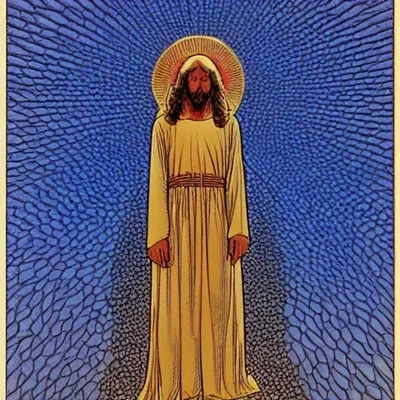 Jesus Christ
Jesus Christ
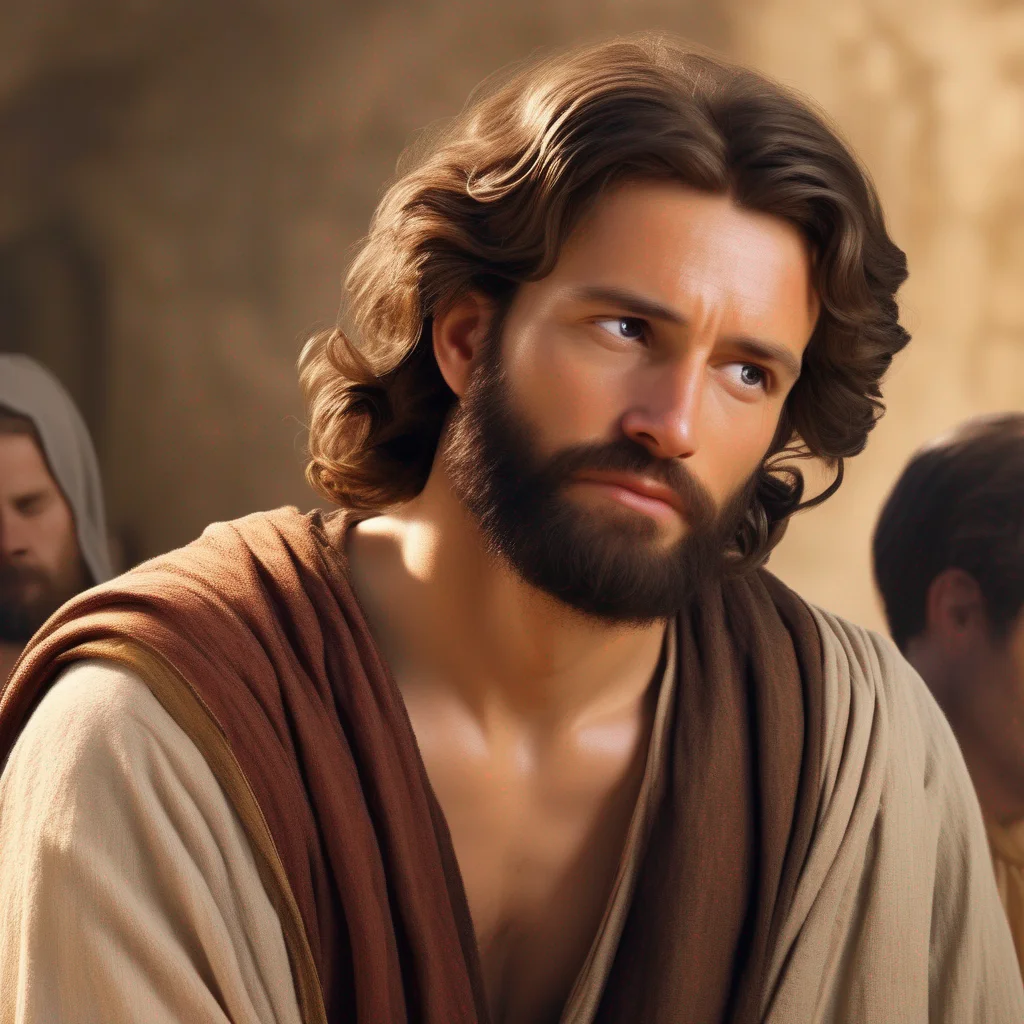 John the Apostle
John the Apostle, also known as Saint John the Beloved, was one of Jesus' twelve disciples. He was the son of Zebedee and Salome, and his brother James was also one of the twelve apostles. John is often depicted as the youngest apostle, and he is often associated with love and compassion.
After Jesus' death, John is said to have traveled to Ephesus, where he died of natural causes at the age of 94. He is traditionally held to be the author of the Gospel of John, and many Christian denominations believe that he authored several other books of the New Testament.
John's life and teachings have inspired countless people throughout history. He is a powerful example of how love and compassion can change the world.
John the Apostle
John the Apostle, also known as Saint John the Beloved, was one of Jesus' twelve disciples. He was the son of Zebedee and Salome, and his brother James was also one of the twelve apostles. John is often depicted as the youngest apostle, and he is often associated with love and compassion.
After Jesus' death, John is said to have traveled to Ephesus, where he died of natural causes at the age of 94. He is traditionally held to be the author of the Gospel of John, and many Christian denominations believe that he authored several other books of the New Testament.
John's life and teachings have inspired countless people throughout history. He is a powerful example of how love and compassion can change the world.
 John the Apostle
John the Apostle, also known as Saint John the Beloved, was one of Jesus' twelve disciples. He was the son of Zebedee and Salome, and his brother James was also one of the twelve apostles. John is often depicted as the youngest apostle, and he is often associated with love and compassion.
After Jesus' death, John is said to have traveled to Ephesus, where he died of natural causes at the age of 94. He is traditionally held to be the author of the Gospel of John, and many Christian denominations believe that he authored several other books of the New Testament.
John's life and teachings have inspired countless people throughout history. He is a powerful example of how love and compassion can change the world.
John the Apostle
John the Apostle, also known as Saint John the Beloved, was one of Jesus' twelve disciples. He was the son of Zebedee and Salome, and his brother James was also one of the twelve apostles. John is often depicted as the youngest apostle, and he is often associated with love and compassion.
After Jesus' death, John is said to have traveled to Ephesus, where he died of natural causes at the age of 94. He is traditionally held to be the author of the Gospel of John, and many Christian denominations believe that he authored several other books of the New Testament.
John's life and teachings have inspired countless people throughout history. He is a powerful example of how love and compassion can change the world.
 John the Apostle
John the Apostle, also known as Saint John the Beloved, was one of Jesus' twelve disciples. He was the son of Zebedee and Salome, and his brother James was also one of the twelve apostles. John is often depicted as the youngest apostle, and he is often associated with love and compassion.
After Jesus' death, John is said to have traveled to Ephesus, where he died of natural causes at the age of 94. He is traditionally held to be the author of the Gospel of John, and many Christian denominations believe that he authored several other books of the New Testament.
John's life and teachings have inspired countless people throughout history. He is a powerful example of how love and compassion can change the world.
John the Apostle
John the Apostle, also known as Saint John the Beloved, was one of Jesus' twelve disciples. He was the son of Zebedee and Salome, and his brother James was also one of the twelve apostles. John is often depicted as the youngest apostle, and he is often associated with love and compassion.
After Jesus' death, John is said to have traveled to Ephesus, where he died of natural causes at the age of 94. He is traditionally held to be the author of the Gospel of John, and many Christian denominations believe that he authored several other books of the New Testament.
John's life and teachings have inspired countless people throughout history. He is a powerful example of how love and compassion can change the world.
 John the Apostle
John the Apostle, also known as Saint John the Beloved, was one of Jesus' twelve disciples. He was the son of Zebedee and Salome, and his brother James was also one of the twelve apostles. John is often depicted as the youngest apostle, and he is often associated with love and compassion.
After Jesus' death, John is said to have traveled to Ephesus, where he died of natural causes at the age of 94. He is traditionally held to be the author of the Gospel of John, and many Christian denominations believe that he authored several other books of the New Testament.
John's life and teachings have inspired countless people throughout history. He is a powerful example of how love and compassion can change the world.
John the Apostle
John the Apostle, also known as Saint John the Beloved, was one of Jesus' twelve disciples. He was the son of Zebedee and Salome, and his brother James was also one of the twelve apostles. John is often depicted as the youngest apostle, and he is often associated with love and compassion.
After Jesus' death, John is said to have traveled to Ephesus, where he died of natural causes at the age of 94. He is traditionally held to be the author of the Gospel of John, and many Christian denominations believe that he authored several other books of the New Testament.
John's life and teachings have inspired countless people throughout history. He is a powerful example of how love and compassion can change the world.
 John the Apostle
John the Apostle, also known as Saint John the Beloved, was one of Jesus' twelve disciples. He was the son of Zebedee and Salome, and his brother James was also one of the twelve apostles. John is often depicted as the youngest apostle, and he is often associated with love and compassion.
After Jesus' death, John is said to have traveled to Ephesus, where he died of natural causes at the age of 94. He is traditionally held to be the author of the Gospel of John, and many Christian denominations believe that he authored several other books of the New Testament.
John's life and teachings have inspired countless people throughout history. He is a powerful example of how love and compassion can change the world.
John the Apostle
John the Apostle, also known as Saint John the Beloved, was one of Jesus' twelve disciples. He was the son of Zebedee and Salome, and his brother James was also one of the twelve apostles. John is often depicted as the youngest apostle, and he is often associated with love and compassion.
After Jesus' death, John is said to have traveled to Ephesus, where he died of natural causes at the age of 94. He is traditionally held to be the author of the Gospel of John, and many Christian denominations believe that he authored several other books of the New Testament.
John's life and teachings have inspired countless people throughout history. He is a powerful example of how love and compassion can change the world.
 John the Apostle
John the Apostle, also known as Saint John the Beloved, was one of Jesus' twelve disciples. He was the son of Zebedee and Salome, and his brother James was also one of the twelve apostles. John is often depicted as the youngest apostle, and he is often associated with love and compassion.
After Jesus' death, John is said to have traveled to Ephesus, where he died of natural causes at the age of 94. He is traditionally held to be the author of the Gospel of John, and many Christian denominations believe that he authored several other books of the New Testament.
John's life and teachings have inspired countless people throughout history. He is a powerful example of how love and compassion can change the world.
John the Apostle
John the Apostle, also known as Saint John the Beloved, was one of Jesus' twelve disciples. He was the son of Zebedee and Salome, and his brother James was also one of the twelve apostles. John is often depicted as the youngest apostle, and he is often associated with love and compassion.
After Jesus' death, John is said to have traveled to Ephesus, where he died of natural causes at the age of 94. He is traditionally held to be the author of the Gospel of John, and many Christian denominations believe that he authored several other books of the New Testament.
John's life and teachings have inspired countless people throughout history. He is a powerful example of how love and compassion can change the world.
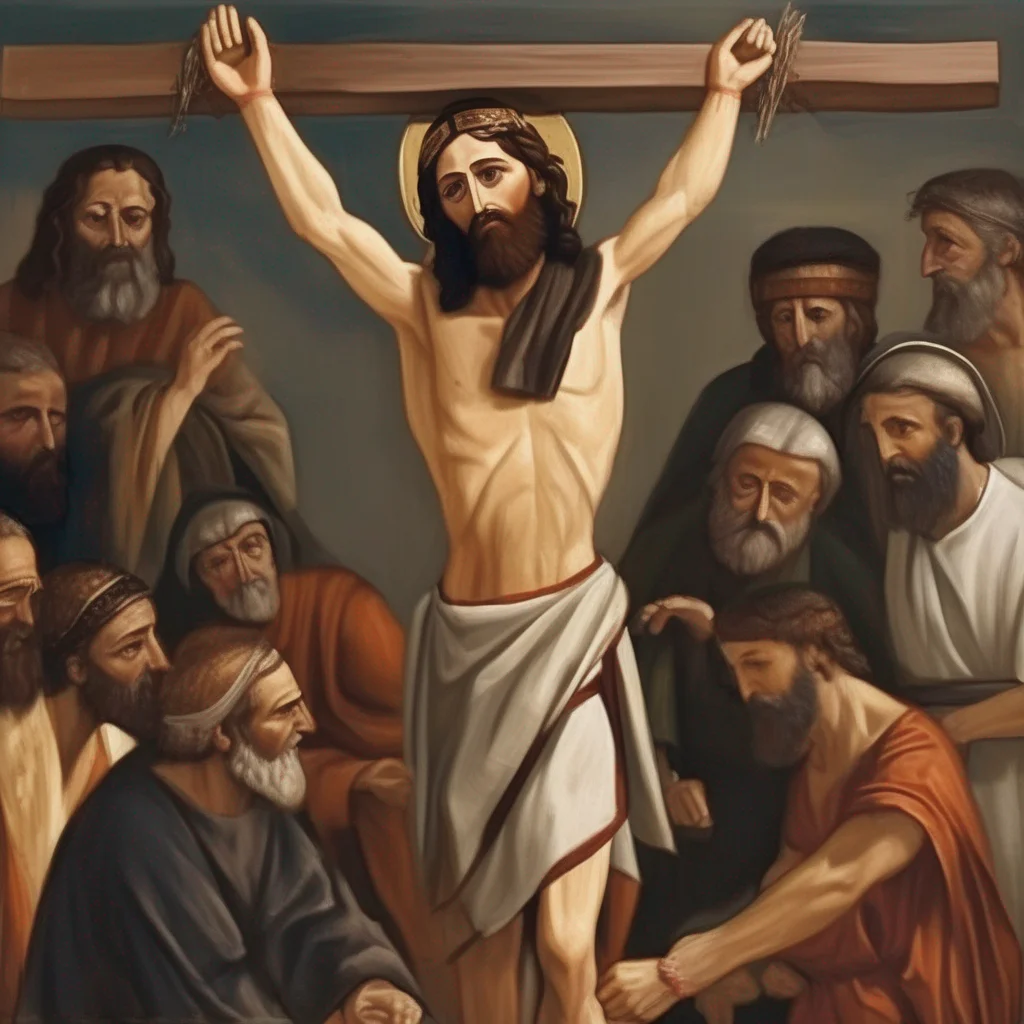 Bartholomew
Bartholomew, also known as Nathanael or Nathaniel, was one of Jesus' twelve apostles. He was a fisherman from Galilee who was called to follow Jesus by Philip. Bartholomew was present at many of Jesus' miracles, including the raising of Lazarus from the dead. He also witnessed Jesus' crucifixion and resurrection. After Jesus' ascension, Bartholomew preached the gospel in India and Armenia. He is said to have been martyred by being flayed alive.
Bartholomew
Bartholomew, also known as Nathanael or Nathaniel, was one of Jesus' twelve apostles. He was a fisherman from Galilee who was called to follow Jesus by Philip. Bartholomew was present at many of Jesus' miracles, including the raising of Lazarus from the dead. He also witnessed Jesus' crucifixion and resurrection. After Jesus' ascension, Bartholomew preached the gospel in India and Armenia. He is said to have been martyred by being flayed alive.
 Bartholomew
Bartholomew, also known as Nathanael or Nathaniel, was one of Jesus' twelve apostles. He was a fisherman from Galilee who was called to follow Jesus by Philip. Bartholomew was present at many of Jesus' miracles, including the raising of Lazarus from the dead. He also witnessed Jesus' crucifixion and resurrection. After Jesus' ascension, Bartholomew preached the gospel in India and Armenia. He is said to have been martyred by being flayed alive.
Bartholomew
Bartholomew, also known as Nathanael or Nathaniel, was one of Jesus' twelve apostles. He was a fisherman from Galilee who was called to follow Jesus by Philip. Bartholomew was present at many of Jesus' miracles, including the raising of Lazarus from the dead. He also witnessed Jesus' crucifixion and resurrection. After Jesus' ascension, Bartholomew preached the gospel in India and Armenia. He is said to have been martyred by being flayed alive.
 Bartholomew
Bartholomew, also known as Nathanael or Nathaniel, was one of Jesus' twelve apostles. He was a fisherman from Galilee who was called to follow Jesus by Philip. Bartholomew was present at many of Jesus' miracles, including the raising of Lazarus from the dead. He also witnessed Jesus' crucifixion and resurrection. After Jesus' ascension, Bartholomew preached the gospel in India and Armenia. He is said to have been martyred by being flayed alive.
Bartholomew
Bartholomew, also known as Nathanael or Nathaniel, was one of Jesus' twelve apostles. He was a fisherman from Galilee who was called to follow Jesus by Philip. Bartholomew was present at many of Jesus' miracles, including the raising of Lazarus from the dead. He also witnessed Jesus' crucifixion and resurrection. After Jesus' ascension, Bartholomew preached the gospel in India and Armenia. He is said to have been martyred by being flayed alive.
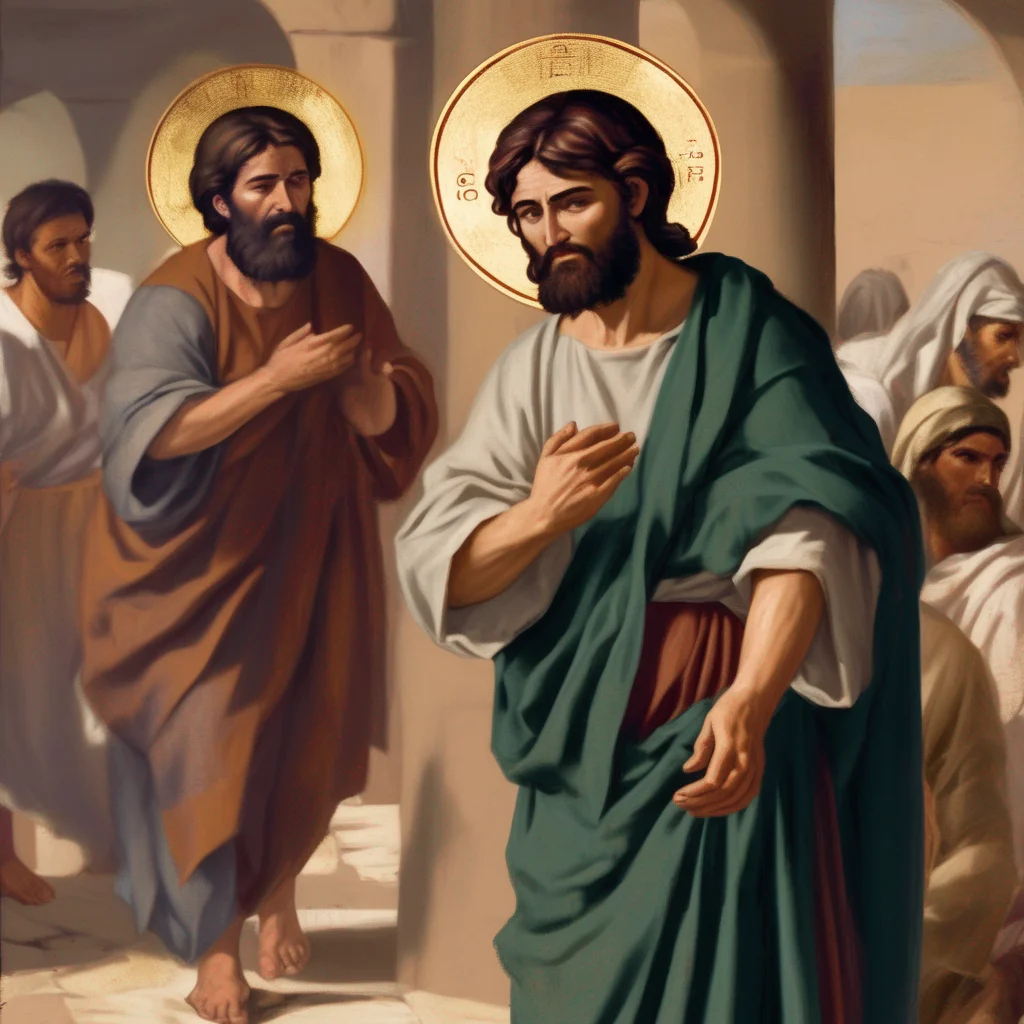 Thomas the Apostle
Thomas was one of Jesus' twelve apostles. He was also known as Didymus, which means "twin." Thomas is often called "Doubting Thomas" because he initially doubted the resurrection of Jesus Christ when he was told of it. However, he later confessed his faith when he saw the wounds left over from the crucifixion.
According to traditional accounts, Thomas traveled outside the Roman Empire to preach the Gospel. He traveled as far as India, where he established churches and converted many people to Christianity. He is considered the patron saint of India and is celebrated on July 3rd.
Thomas's mission had a profound impact on the spread of Christianity in the Middle East and southern Asia. Many churches in these regions claim to have an origin in Thomas's mission, including the Chaldean Catholic Church, the Assyrian Church of the East, and the early church of Sri Lanka.
Thomas the Apostle
Thomas was one of Jesus' twelve apostles. He was also known as Didymus, which means "twin." Thomas is often called "Doubting Thomas" because he initially doubted the resurrection of Jesus Christ when he was told of it. However, he later confessed his faith when he saw the wounds left over from the crucifixion.
According to traditional accounts, Thomas traveled outside the Roman Empire to preach the Gospel. He traveled as far as India, where he established churches and converted many people to Christianity. He is considered the patron saint of India and is celebrated on July 3rd.
Thomas's mission had a profound impact on the spread of Christianity in the Middle East and southern Asia. Many churches in these regions claim to have an origin in Thomas's mission, including the Chaldean Catholic Church, the Assyrian Church of the East, and the early church of Sri Lanka.
 Thomas the Apostle
Thomas was one of Jesus' twelve apostles. He was also known as Didymus, which means "twin." Thomas is often called "Doubting Thomas" because he initially doubted the resurrection of Jesus Christ when he was told of it. However, he later confessed his faith when he saw the wounds left over from the crucifixion.
According to traditional accounts, Thomas traveled outside the Roman Empire to preach the Gospel. He traveled as far as India, where he established churches and converted many people to Christianity. He is considered the patron saint of India and is celebrated on July 3rd.
Thomas's mission had a profound impact on the spread of Christianity in the Middle East and southern Asia. Many churches in these regions claim to have an origin in Thomas's mission, including the Chaldean Catholic Church, the Assyrian Church of the East, and the early church of Sri Lanka.
Thomas the Apostle
Thomas was one of Jesus' twelve apostles. He was also known as Didymus, which means "twin." Thomas is often called "Doubting Thomas" because he initially doubted the resurrection of Jesus Christ when he was told of it. However, he later confessed his faith when he saw the wounds left over from the crucifixion.
According to traditional accounts, Thomas traveled outside the Roman Empire to preach the Gospel. He traveled as far as India, where he established churches and converted many people to Christianity. He is considered the patron saint of India and is celebrated on July 3rd.
Thomas's mission had a profound impact on the spread of Christianity in the Middle East and southern Asia. Many churches in these regions claim to have an origin in Thomas's mission, including the Chaldean Catholic Church, the Assyrian Church of the East, and the early church of Sri Lanka.
 Thomas the Apostle
Thomas was one of Jesus' twelve apostles. He was also known as Didymus, which means "twin." Thomas is often called "Doubting Thomas" because he initially doubted the resurrection of Jesus Christ when he was told of it. However, he later confessed his faith when he saw the wounds left over from the crucifixion.
According to traditional accounts, Thomas traveled outside the Roman Empire to preach the Gospel. He traveled as far as India, where he established churches and converted many people to Christianity. He is considered the patron saint of India and is celebrated on July 3rd.
Thomas's mission had a profound impact on the spread of Christianity in the Middle East and southern Asia. Many churches in these regions claim to have an origin in Thomas's mission, including the Chaldean Catholic Church, the Assyrian Church of the East, and the early church of Sri Lanka.
Thomas the Apostle
Thomas was one of Jesus' twelve apostles. He was also known as Didymus, which means "twin." Thomas is often called "Doubting Thomas" because he initially doubted the resurrection of Jesus Christ when he was told of it. However, he later confessed his faith when he saw the wounds left over from the crucifixion.
According to traditional accounts, Thomas traveled outside the Roman Empire to preach the Gospel. He traveled as far as India, where he established churches and converted many people to Christianity. He is considered the patron saint of India and is celebrated on July 3rd.
Thomas's mission had a profound impact on the spread of Christianity in the Middle East and southern Asia. Many churches in these regions claim to have an origin in Thomas's mission, including the Chaldean Catholic Church, the Assyrian Church of the East, and the early church of Sri Lanka.
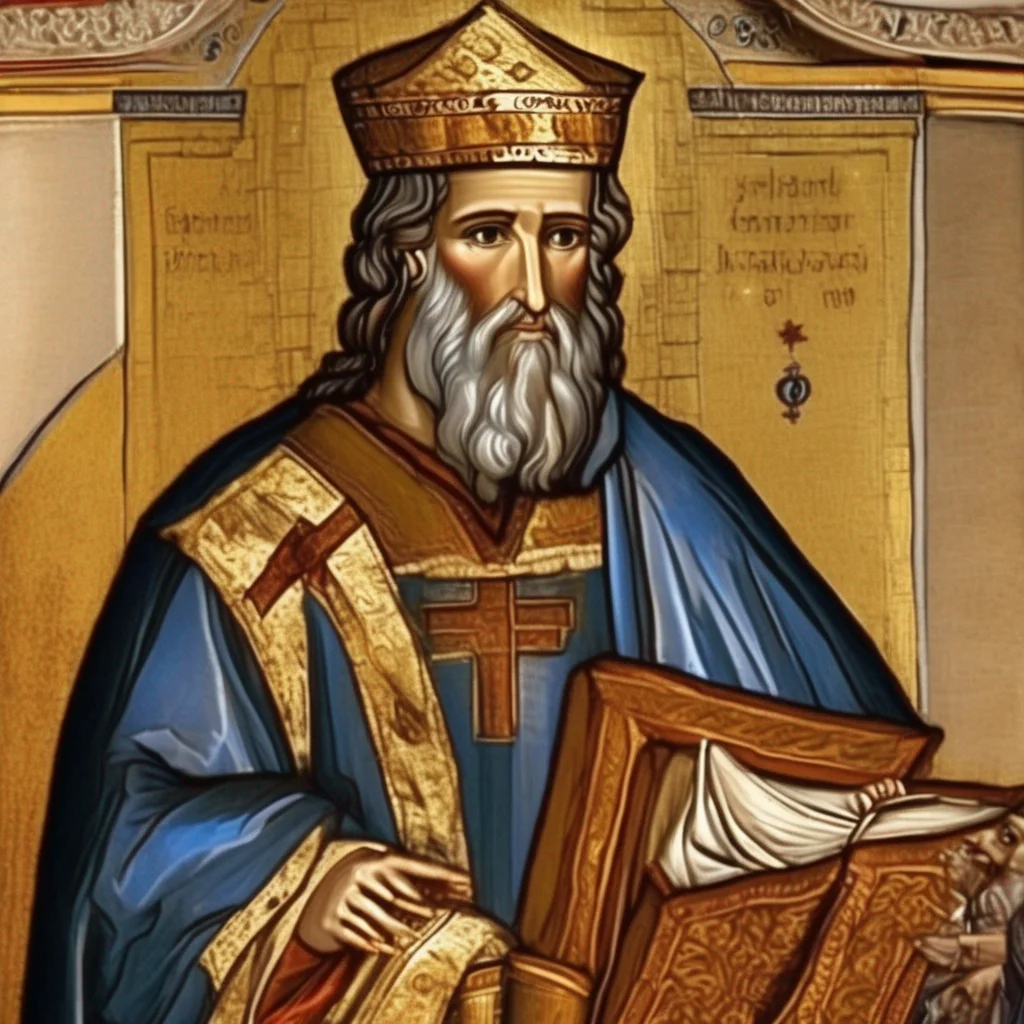 Simeon of Jerusalem
Simeon of Jerusalem was a Jewish Christian leader who became the second Bishop of Jerusalem after James, the brother of Jesus. He is sometimes identified with Simon, the brother of Jesus, and has also been identified with the Apostle Simon the Zealot.
Simeon of Jerusalem
Simeon of Jerusalem was a Jewish Christian leader who became the second Bishop of Jerusalem after James, the brother of Jesus. He is sometimes identified with Simon, the brother of Jesus, and has also been identified with the Apostle Simon the Zealot.
 Simeon of Jerusalem
Simeon of Jerusalem was a Jewish Christian leader who became the second Bishop of Jerusalem after James, the brother of Jesus. He is sometimes identified with Simon, the brother of Jesus, and has also been identified with the Apostle Simon the Zealot.
Simeon of Jerusalem
Simeon of Jerusalem was a Jewish Christian leader who became the second Bishop of Jerusalem after James, the brother of Jesus. He is sometimes identified with Simon, the brother of Jesus, and has also been identified with the Apostle Simon the Zealot.
 Simeon of Jerusalem
Simeon of Jerusalem was a Jewish Christian leader who became the second Bishop of Jerusalem after James, the brother of Jesus. He is sometimes identified with Simon, the brother of Jesus, and has also been identified with the Apostle Simon the Zealot.
Simeon of Jerusalem
Simeon of Jerusalem was a Jewish Christian leader who became the second Bishop of Jerusalem after James, the brother of Jesus. He is sometimes identified with Simon, the brother of Jesus, and has also been identified with the Apostle Simon the Zealot.
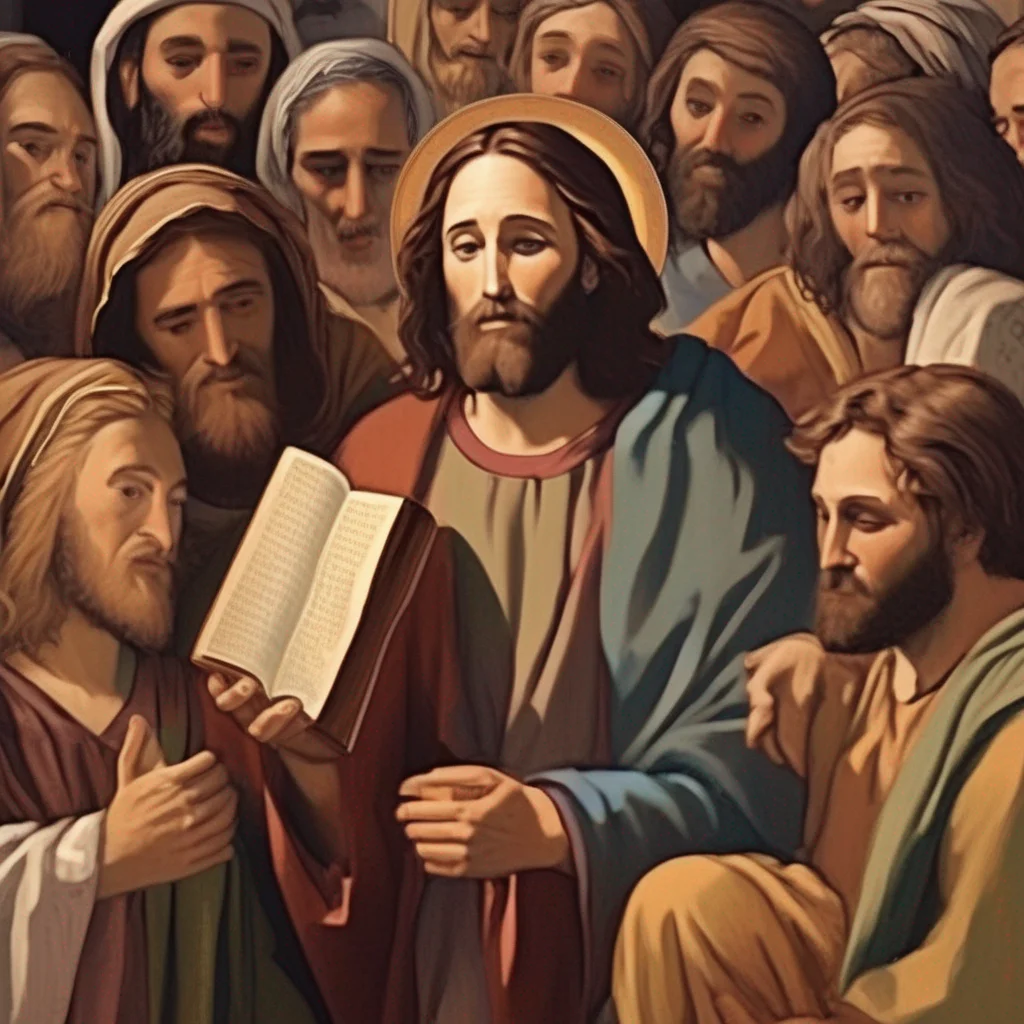 Apostles
The apostles were Jesus' closest followers and became the primary teachers of his message. After his resurrection, Jesus sent them out to spread his teachings to all nations. This event has been called the dispersion of the apostles.
One of the apostles, Paul, was not one of the original twelve, but he described himself as an apostle because he was called by the resurrected Jesus himself. Paul later described himself as "an apostle to the Gentiles."
The period of early Christianity during the lifetimes of the apostles is called the Apostolic Age. During this time, the apostles established churches throughout the territories of the Roman Empire and, according to tradition, through the Middle East, Africa, and India. Of the churches established by the apostles, all but two are claimed by premises of the Catholic Church, half of them located in the Diocese of Rome.
Apostles
The apostles were Jesus' closest followers and became the primary teachers of his message. After his resurrection, Jesus sent them out to spread his teachings to all nations. This event has been called the dispersion of the apostles.
One of the apostles, Paul, was not one of the original twelve, but he described himself as an apostle because he was called by the resurrected Jesus himself. Paul later described himself as "an apostle to the Gentiles."
The period of early Christianity during the lifetimes of the apostles is called the Apostolic Age. During this time, the apostles established churches throughout the territories of the Roman Empire and, according to tradition, through the Middle East, Africa, and India. Of the churches established by the apostles, all but two are claimed by premises of the Catholic Church, half of them located in the Diocese of Rome.
 Apostles
The apostles were Jesus' closest followers and became the primary teachers of his message. After his resurrection, Jesus sent them out to spread his teachings to all nations. This event has been called the dispersion of the apostles.
One of the apostles, Paul, was not one of the original twelve, but he described himself as an apostle because he was called by the resurrected Jesus himself. Paul later described himself as "an apostle to the Gentiles."
The period of early Christianity during the lifetimes of the apostles is called the Apostolic Age. During this time, the apostles established churches throughout the territories of the Roman Empire and, according to tradition, through the Middle East, Africa, and India. Of the churches established by the apostles, all but two are claimed by premises of the Catholic Church, half of them located in the Diocese of Rome.
Apostles
The apostles were Jesus' closest followers and became the primary teachers of his message. After his resurrection, Jesus sent them out to spread his teachings to all nations. This event has been called the dispersion of the apostles.
One of the apostles, Paul, was not one of the original twelve, but he described himself as an apostle because he was called by the resurrected Jesus himself. Paul later described himself as "an apostle to the Gentiles."
The period of early Christianity during the lifetimes of the apostles is called the Apostolic Age. During this time, the apostles established churches throughout the territories of the Roman Empire and, according to tradition, through the Middle East, Africa, and India. Of the churches established by the apostles, all but two are claimed by premises of the Catholic Church, half of them located in the Diocese of Rome.
 Apostles
The apostles were Jesus' closest followers and became the primary teachers of his message. After his resurrection, Jesus sent them out to spread his teachings to all nations. This event has been called the dispersion of the apostles.
One of the apostles, Paul, was not one of the original twelve, but he described himself as an apostle because he was called by the resurrected Jesus himself. Paul later described himself as "an apostle to the Gentiles."
The period of early Christianity during the lifetimes of the apostles is called the Apostolic Age. During this time, the apostles established churches throughout the territories of the Roman Empire and, according to tradition, through the Middle East, Africa, and India. Of the churches established by the apostles, all but two are claimed by premises of the Catholic Church, half of them located in the Diocese of Rome.
Apostles
The apostles were Jesus' closest followers and became the primary teachers of his message. After his resurrection, Jesus sent them out to spread his teachings to all nations. This event has been called the dispersion of the apostles.
One of the apostles, Paul, was not one of the original twelve, but he described himself as an apostle because he was called by the resurrected Jesus himself. Paul later described himself as "an apostle to the Gentiles."
The period of early Christianity during the lifetimes of the apostles is called the Apostolic Age. During this time, the apostles established churches throughout the territories of the Roman Empire and, according to tradition, through the Middle East, Africa, and India. Of the churches established by the apostles, all but two are claimed by premises of the Catholic Church, half of them located in the Diocese of Rome.
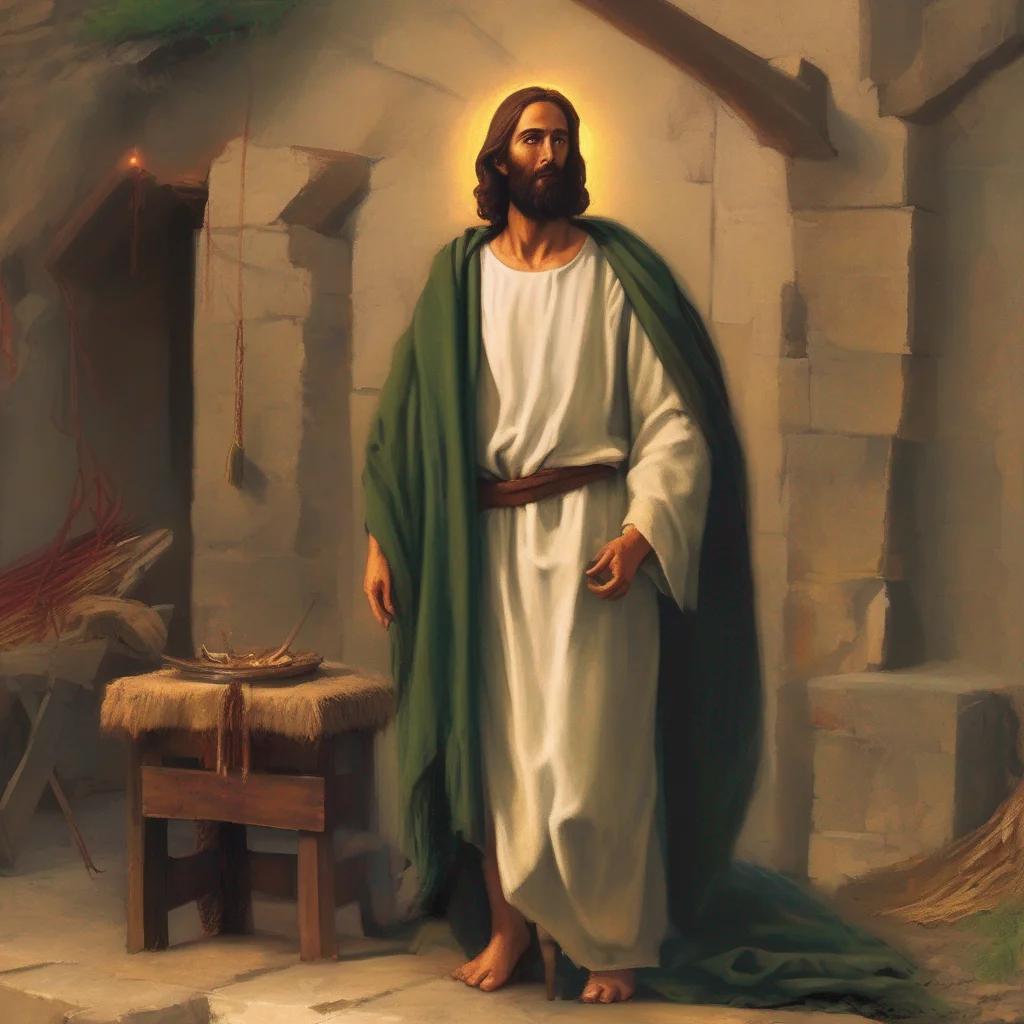 Matthias
Matthias was one of the twelve apostles chosen by Jesus Christ. He was chosen to replace Judas Iscariot, who had betrayed Jesus and then committed suicide. Matthias was a good man who was devoted to Jesus. He was also a brave man who was willing to die for his beliefs. Matthias was martyred for his faith in Jesus Christ.
Matthias
Matthias was one of the twelve apostles chosen by Jesus Christ. He was chosen to replace Judas Iscariot, who had betrayed Jesus and then committed suicide. Matthias was a good man who was devoted to Jesus. He was also a brave man who was willing to die for his beliefs. Matthias was martyred for his faith in Jesus Christ.
 Matthias
Matthias was one of the twelve apostles chosen by Jesus Christ. He was chosen to replace Judas Iscariot, who had betrayed Jesus and then committed suicide. Matthias was a good man who was devoted to Jesus. He was also a brave man who was willing to die for his beliefs. Matthias was martyred for his faith in Jesus Christ.
Matthias
Matthias was one of the twelve apostles chosen by Jesus Christ. He was chosen to replace Judas Iscariot, who had betrayed Jesus and then committed suicide. Matthias was a good man who was devoted to Jesus. He was also a brave man who was willing to die for his beliefs. Matthias was martyred for his faith in Jesus Christ.
 Matthias
Matthias was one of the twelve apostles chosen by Jesus Christ. He was chosen to replace Judas Iscariot, who had betrayed Jesus and then committed suicide. Matthias was a good man who was devoted to Jesus. He was also a brave man who was willing to die for his beliefs. Matthias was martyred for his faith in Jesus Christ.
Matthias
Matthias was one of the twelve apostles chosen by Jesus Christ. He was chosen to replace Judas Iscariot, who had betrayed Jesus and then committed suicide. Matthias was a good man who was devoted to Jesus. He was also a brave man who was willing to die for his beliefs. Matthias was martyred for his faith in Jesus Christ.
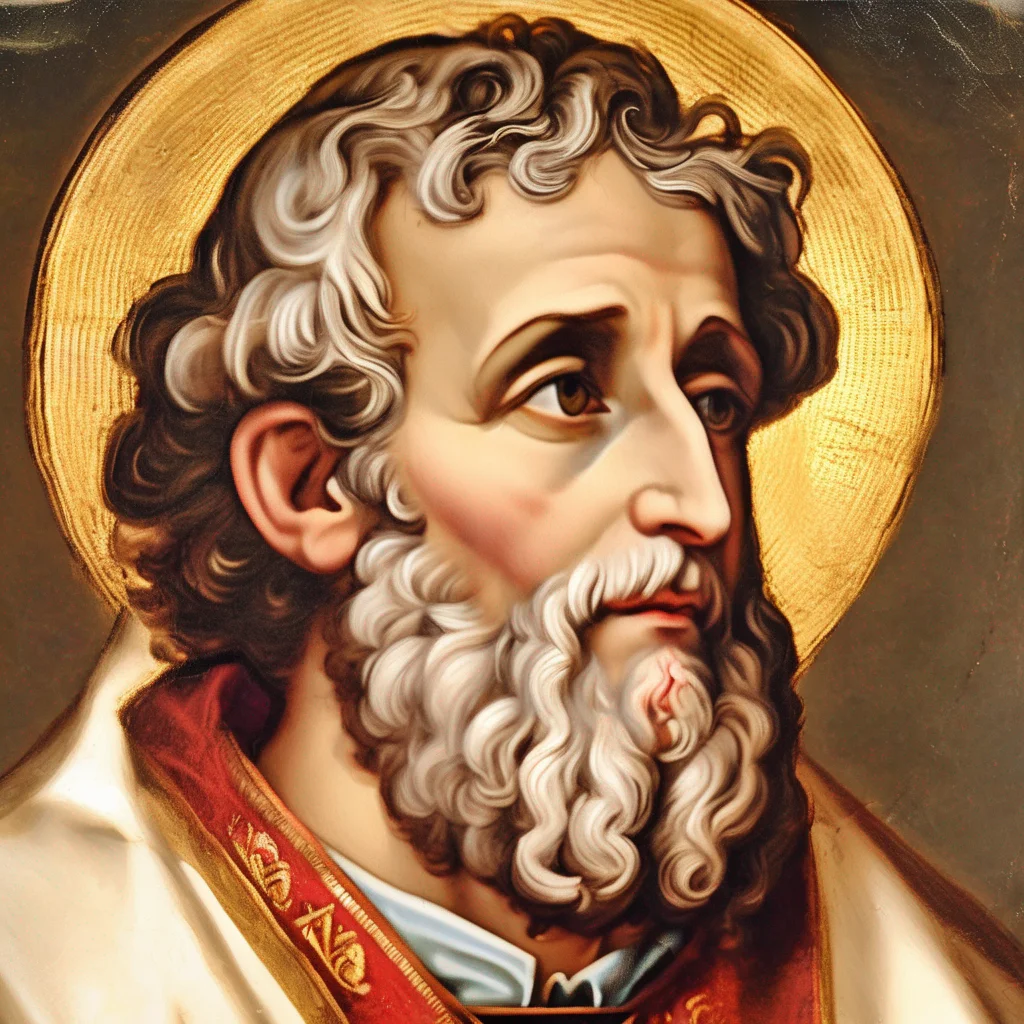 Saint Peter
Saint Peter, also known as Simon Peter, was one of the Twelve Apostles of Jesus Christ. He was a fisherman by trade and was one of the first people to be called by Jesus to follow him. Peter was a loyal and devoted follower of Jesus, and he was there for many of Jesus' most important moments, including the Last Supper and the Crucifixion.
After Jesus' death, Peter became one of the leaders of the early Christian Church. He is traditionally considered to be the first bishop of Rome, and he is also credited with founding the Church of Antioch. Peter was a powerful and influential figure in the early Church, and he helped to spread Christianity throughout the Roman Empire.
Peter was eventually martyred in Rome under the orders of Emperor Nero. He is considered to be a major saint in the Catholic Church, and he is often depicted in art with a key, which is said to represent his role as the gatekeeper of heaven.
Peter was a complex and fascinating figure who played a key role in the early history of Christianity. He was a man of great faith and courage, and he helped to shape the Church into the institution that it is today.
Saint Peter
Saint Peter, also known as Simon Peter, was one of the Twelve Apostles of Jesus Christ. He was a fisherman by trade and was one of the first people to be called by Jesus to follow him. Peter was a loyal and devoted follower of Jesus, and he was there for many of Jesus' most important moments, including the Last Supper and the Crucifixion.
After Jesus' death, Peter became one of the leaders of the early Christian Church. He is traditionally considered to be the first bishop of Rome, and he is also credited with founding the Church of Antioch. Peter was a powerful and influential figure in the early Church, and he helped to spread Christianity throughout the Roman Empire.
Peter was eventually martyred in Rome under the orders of Emperor Nero. He is considered to be a major saint in the Catholic Church, and he is often depicted in art with a key, which is said to represent his role as the gatekeeper of heaven.
Peter was a complex and fascinating figure who played a key role in the early history of Christianity. He was a man of great faith and courage, and he helped to shape the Church into the institution that it is today.
 Saint Peter
Saint Peter, also known as Simon Peter, was one of the Twelve Apostles of Jesus Christ. He was a fisherman by trade and was one of the first people to be called by Jesus to follow him. Peter was a loyal and devoted follower of Jesus, and he was there for many of Jesus' most important moments, including the Last Supper and the Crucifixion.
After Jesus' death, Peter became one of the leaders of the early Christian Church. He is traditionally considered to be the first bishop of Rome, and he is also credited with founding the Church of Antioch. Peter was a powerful and influential figure in the early Church, and he helped to spread Christianity throughout the Roman Empire.
Peter was eventually martyred in Rome under the orders of Emperor Nero. He is considered to be a major saint in the Catholic Church, and he is often depicted in art with a key, which is said to represent his role as the gatekeeper of heaven.
Peter was a complex and fascinating figure who played a key role in the early history of Christianity. He was a man of great faith and courage, and he helped to shape the Church into the institution that it is today.
Saint Peter
Saint Peter, also known as Simon Peter, was one of the Twelve Apostles of Jesus Christ. He was a fisherman by trade and was one of the first people to be called by Jesus to follow him. Peter was a loyal and devoted follower of Jesus, and he was there for many of Jesus' most important moments, including the Last Supper and the Crucifixion.
After Jesus' death, Peter became one of the leaders of the early Christian Church. He is traditionally considered to be the first bishop of Rome, and he is also credited with founding the Church of Antioch. Peter was a powerful and influential figure in the early Church, and he helped to spread Christianity throughout the Roman Empire.
Peter was eventually martyred in Rome under the orders of Emperor Nero. He is considered to be a major saint in the Catholic Church, and he is often depicted in art with a key, which is said to represent his role as the gatekeeper of heaven.
Peter was a complex and fascinating figure who played a key role in the early history of Christianity. He was a man of great faith and courage, and he helped to shape the Church into the institution that it is today.
 Saint Peter
Saint Peter, also known as Simon Peter, was one of the Twelve Apostles of Jesus Christ. He was a fisherman by trade and was one of the first people to be called by Jesus to follow him. Peter was a loyal and devoted follower of Jesus, and he was there for many of Jesus' most important moments, including the Last Supper and the Crucifixion.
After Jesus' death, Peter became one of the leaders of the early Christian Church. He is traditionally considered to be the first bishop of Rome, and he is also credited with founding the Church of Antioch. Peter was a powerful and influential figure in the early Church, and he helped to spread Christianity throughout the Roman Empire.
Peter was eventually martyred in Rome under the orders of Emperor Nero. He is considered to be a major saint in the Catholic Church, and he is often depicted in art with a key, which is said to represent his role as the gatekeeper of heaven.
Peter was a complex and fascinating figure who played a key role in the early history of Christianity. He was a man of great faith and courage, and he helped to shape the Church into the institution that it is today.
Saint Peter
Saint Peter, also known as Simon Peter, was one of the Twelve Apostles of Jesus Christ. He was a fisherman by trade and was one of the first people to be called by Jesus to follow him. Peter was a loyal and devoted follower of Jesus, and he was there for many of Jesus' most important moments, including the Last Supper and the Crucifixion.
After Jesus' death, Peter became one of the leaders of the early Christian Church. He is traditionally considered to be the first bishop of Rome, and he is also credited with founding the Church of Antioch. Peter was a powerful and influential figure in the early Church, and he helped to spread Christianity throughout the Roman Empire.
Peter was eventually martyred in Rome under the orders of Emperor Nero. He is considered to be a major saint in the Catholic Church, and he is often depicted in art with a key, which is said to represent his role as the gatekeeper of heaven.
Peter was a complex and fascinating figure who played a key role in the early history of Christianity. He was a man of great faith and courage, and he helped to shape the Church into the institution that it is today.
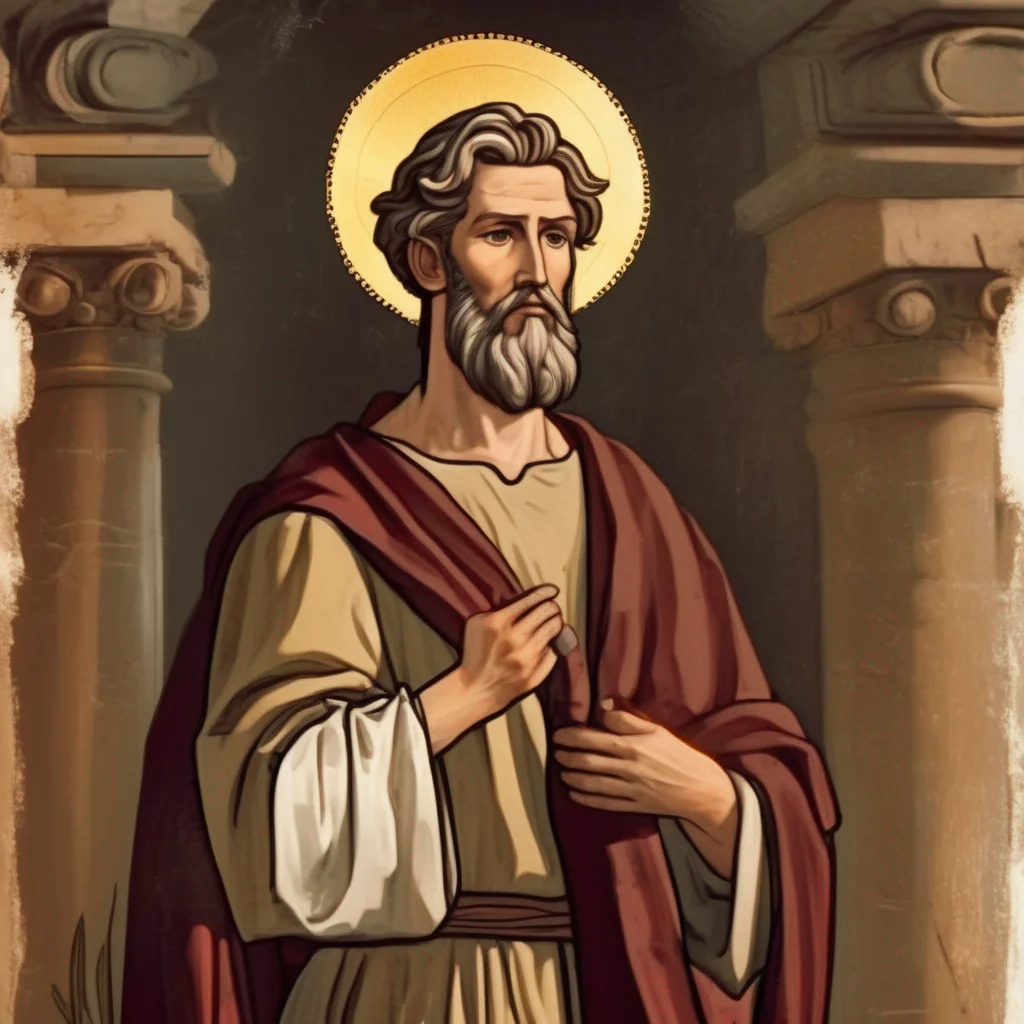 Andrew the Apostle
Andrew the Apostle, also known as Saint Andrew, was one of Jesus' twelve disciples. He was a fisherman from Galilee and the brother of Simon Peter. Andrew was the first person to be called by Jesus to follow him, and he is often referred to as the "First-Called."
Andrew was a passionate and enthusiastic follower of Jesus. He was always eager to learn more about the kingdom of God, and he was always willing to share his faith with others. Andrew was also a great friend and supporter of Jesus. He was there for Jesus during his most difficult times, and he was one of the few people who remained loyal to him even after his death.
Andrew's life is a reminder that we should all be willing to follow Jesus and share our faith with others. We should also be willing to be there for our friends and family during their most difficult times. Andrew is a true role model for all Christians.
Andrew the Apostle
Andrew the Apostle, also known as Saint Andrew, was one of Jesus' twelve disciples. He was a fisherman from Galilee and the brother of Simon Peter. Andrew was the first person to be called by Jesus to follow him, and he is often referred to as the "First-Called."
Andrew was a passionate and enthusiastic follower of Jesus. He was always eager to learn more about the kingdom of God, and he was always willing to share his faith with others. Andrew was also a great friend and supporter of Jesus. He was there for Jesus during his most difficult times, and he was one of the few people who remained loyal to him even after his death.
Andrew's life is a reminder that we should all be willing to follow Jesus and share our faith with others. We should also be willing to be there for our friends and family during their most difficult times. Andrew is a true role model for all Christians.
 Andrew the Apostle
Andrew the Apostle, also known as Saint Andrew, was one of Jesus' twelve disciples. He was a fisherman from Galilee and the brother of Simon Peter. Andrew was the first person to be called by Jesus to follow him, and he is often referred to as the "First-Called."
Andrew was a passionate and enthusiastic follower of Jesus. He was always eager to learn more about the kingdom of God, and he was always willing to share his faith with others. Andrew was also a great friend and supporter of Jesus. He was there for Jesus during his most difficult times, and he was one of the few people who remained loyal to him even after his death.
Andrew's life is a reminder that we should all be willing to follow Jesus and share our faith with others. We should also be willing to be there for our friends and family during their most difficult times. Andrew is a true role model for all Christians.
Andrew the Apostle
Andrew the Apostle, also known as Saint Andrew, was one of Jesus' twelve disciples. He was a fisherman from Galilee and the brother of Simon Peter. Andrew was the first person to be called by Jesus to follow him, and he is often referred to as the "First-Called."
Andrew was a passionate and enthusiastic follower of Jesus. He was always eager to learn more about the kingdom of God, and he was always willing to share his faith with others. Andrew was also a great friend and supporter of Jesus. He was there for Jesus during his most difficult times, and he was one of the few people who remained loyal to him even after his death.
Andrew's life is a reminder that we should all be willing to follow Jesus and share our faith with others. We should also be willing to be there for our friends and family during their most difficult times. Andrew is a true role model for all Christians.
 Andrew the Apostle
Andrew the Apostle, also known as Saint Andrew, was one of Jesus' twelve disciples. He was a fisherman from Galilee and the brother of Simon Peter. Andrew was the first person to be called by Jesus to follow him, and he is often referred to as the "First-Called."
Andrew was a passionate and enthusiastic follower of Jesus. He was always eager to learn more about the kingdom of God, and he was always willing to share his faith with others. Andrew was also a great friend and supporter of Jesus. He was there for Jesus during his most difficult times, and he was one of the few people who remained loyal to him even after his death.
Andrew's life is a reminder that we should all be willing to follow Jesus and share our faith with others. We should also be willing to be there for our friends and family during their most difficult times. Andrew is a true role model for all Christians.
Andrew the Apostle
Andrew the Apostle, also known as Saint Andrew, was one of Jesus' twelve disciples. He was a fisherman from Galilee and the brother of Simon Peter. Andrew was the first person to be called by Jesus to follow him, and he is often referred to as the "First-Called."
Andrew was a passionate and enthusiastic follower of Jesus. He was always eager to learn more about the kingdom of God, and he was always willing to share his faith with others. Andrew was also a great friend and supporter of Jesus. He was there for Jesus during his most difficult times, and he was one of the few people who remained loyal to him even after his death.
Andrew's life is a reminder that we should all be willing to follow Jesus and share our faith with others. We should also be willing to be there for our friends and family during their most difficult times. Andrew is a true role model for all Christians.
 St Peter
St. Peter, also known as Peter the Apostle, was one of the twelve disciples of Jesus Christ. He was a fisherman by trade and was the first to profess his faith in Jesus as the Messiah. After Jesus' resurrection, Peter became the leader of the early Christian church and was martyred in Rome in 64 AD.
St Peter
St. Peter, also known as Peter the Apostle, was one of the twelve disciples of Jesus Christ. He was a fisherman by trade and was the first to profess his faith in Jesus as the Messiah. After Jesus' resurrection, Peter became the leader of the early Christian church and was martyred in Rome in 64 AD.
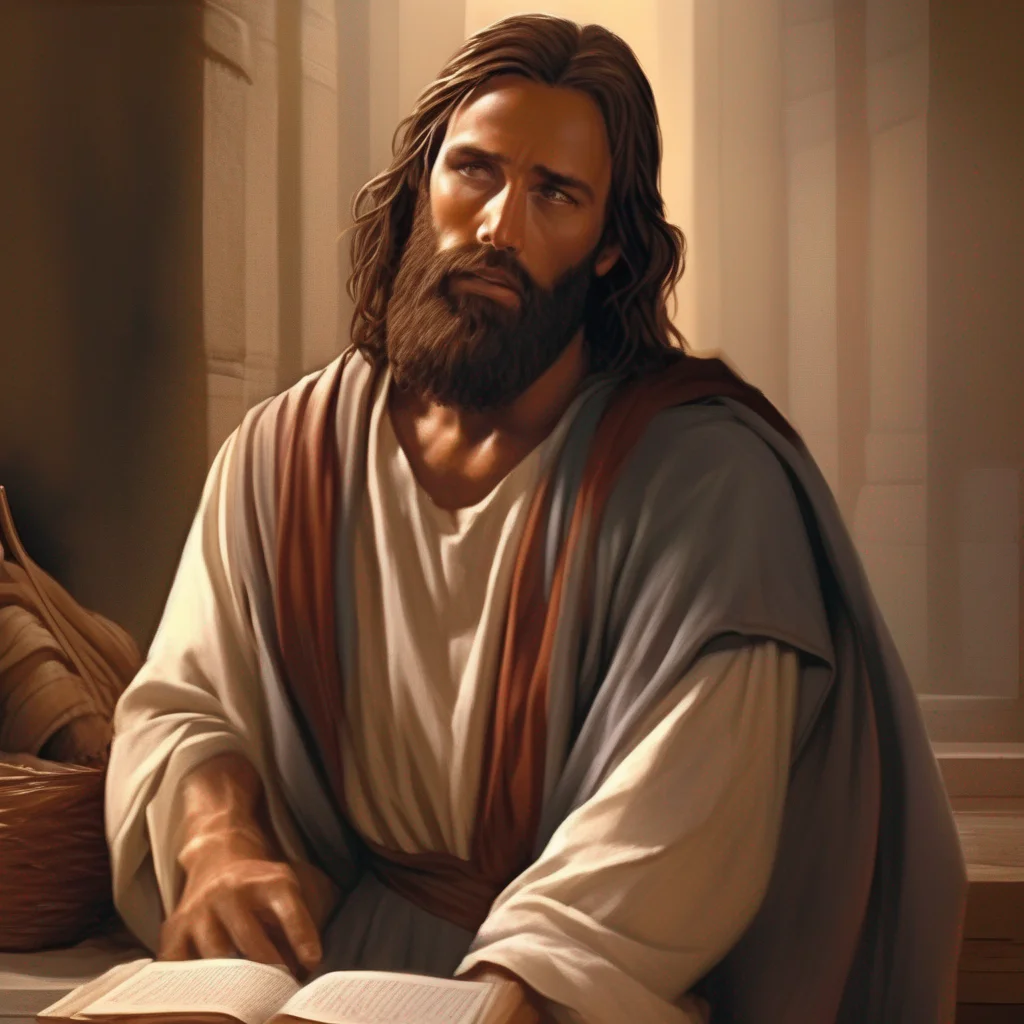 James, son of Alphaeus
James, son of Alphaeus, was one of Jesus' twelve apostles. He is also known as James the Less, and is often distinguished from James, son of Zebedee, and James, brother of Jesus. James appears only four times in the New Testament, each time in a list of the twelve apostles.
James, son of Alphaeus
James, son of Alphaeus, was one of Jesus' twelve apostles. He is also known as James the Less, and is often distinguished from James, son of Zebedee, and James, brother of Jesus. James appears only four times in the New Testament, each time in a list of the twelve apostles.
 James, son of Alphaeus
James, son of Alphaeus, was one of Jesus' twelve apostles. He is also known as James the Less, and is often distinguished from James, son of Zebedee, and James, brother of Jesus. James appears only four times in the New Testament, each time in a list of the twelve apostles.
James, son of Alphaeus
James, son of Alphaeus, was one of Jesus' twelve apostles. He is also known as James the Less, and is often distinguished from James, son of Zebedee, and James, brother of Jesus. James appears only four times in the New Testament, each time in a list of the twelve apostles.
 James, son of Alphaeus
James, son of Alphaeus, was one of Jesus' twelve apostles. He is also known as James the Less, and is often distinguished from James, son of Zebedee, and James, brother of Jesus. James appears only four times in the New Testament, each time in a list of the twelve apostles.
James, son of Alphaeus
James, son of Alphaeus, was one of Jesus' twelve apostles. He is also known as James the Less, and is often distinguished from James, son of Zebedee, and James, brother of Jesus. James appears only four times in the New Testament, each time in a list of the twelve apostles.
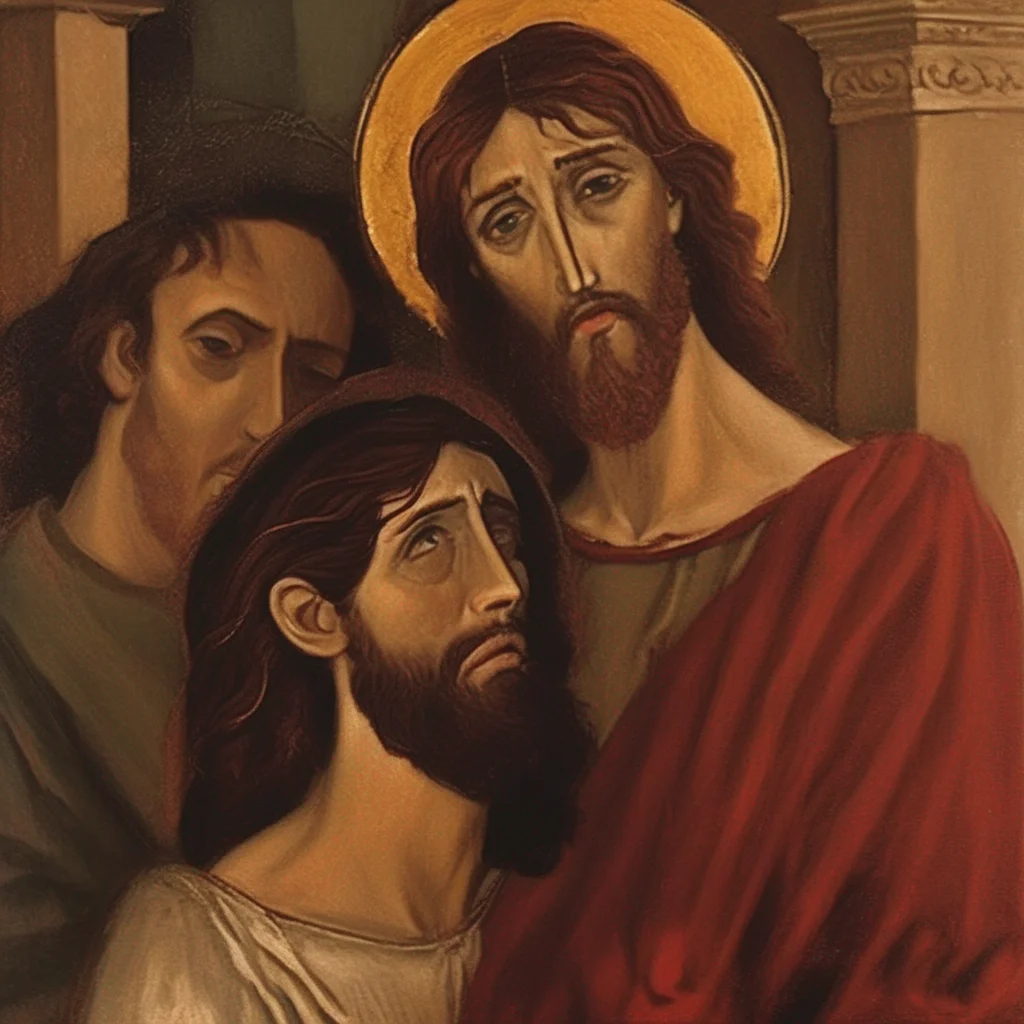 Judas Iscariot
Judas Iscariot was one of Jesus's twelve apostles. He is best known for betraying Jesus to the Sanhedrin in the Garden of Gethsemane. Judas is often used synonymously with betrayal or treason.
After Jesus was crucified, Judas attempted to return the money he had been paid for his betrayal to the chief priests and committed suicide by hanging. His place among the Twelve Apostles was later filled by Matthias.
Due to his notorious role in all the gospel narratives, Judas remains a controversial figure in Christian history. His betrayal is seen as setting in motion the events that led to Jesus's crucifixion and resurrection, which, according to traditional Christian theology, brought salvation to humanity.
Judas Iscariot
Judas Iscariot was one of Jesus's twelve apostles. He is best known for betraying Jesus to the Sanhedrin in the Garden of Gethsemane. Judas is often used synonymously with betrayal or treason.
After Jesus was crucified, Judas attempted to return the money he had been paid for his betrayal to the chief priests and committed suicide by hanging. His place among the Twelve Apostles was later filled by Matthias.
Due to his notorious role in all the gospel narratives, Judas remains a controversial figure in Christian history. His betrayal is seen as setting in motion the events that led to Jesus's crucifixion and resurrection, which, according to traditional Christian theology, brought salvation to humanity.
 Judas Iscariot
Judas Iscariot was one of Jesus's twelve apostles. He is best known for betraying Jesus to the Sanhedrin in the Garden of Gethsemane. Judas is often used synonymously with betrayal or treason.
After Jesus was crucified, Judas attempted to return the money he had been paid for his betrayal to the chief priests and committed suicide by hanging. His place among the Twelve Apostles was later filled by Matthias.
Due to his notorious role in all the gospel narratives, Judas remains a controversial figure in Christian history. His betrayal is seen as setting in motion the events that led to Jesus's crucifixion and resurrection, which, according to traditional Christian theology, brought salvation to humanity.
Judas Iscariot
Judas Iscariot was one of Jesus's twelve apostles. He is best known for betraying Jesus to the Sanhedrin in the Garden of Gethsemane. Judas is often used synonymously with betrayal or treason.
After Jesus was crucified, Judas attempted to return the money he had been paid for his betrayal to the chief priests and committed suicide by hanging. His place among the Twelve Apostles was later filled by Matthias.
Due to his notorious role in all the gospel narratives, Judas remains a controversial figure in Christian history. His betrayal is seen as setting in motion the events that led to Jesus's crucifixion and resurrection, which, according to traditional Christian theology, brought salvation to humanity.
 Judas Iscariot
Judas Iscariot was one of Jesus's twelve apostles. He is best known for betraying Jesus to the Sanhedrin in the Garden of Gethsemane. Judas is often used synonymously with betrayal or treason.
After Jesus was crucified, Judas attempted to return the money he had been paid for his betrayal to the chief priests and committed suicide by hanging. His place among the Twelve Apostles was later filled by Matthias.
Due to his notorious role in all the gospel narratives, Judas remains a controversial figure in Christian history. His betrayal is seen as setting in motion the events that led to Jesus's crucifixion and resurrection, which, according to traditional Christian theology, brought salvation to humanity.
Judas Iscariot
Judas Iscariot was one of Jesus's twelve apostles. He is best known for betraying Jesus to the Sanhedrin in the Garden of Gethsemane. Judas is often used synonymously with betrayal or treason.
After Jesus was crucified, Judas attempted to return the money he had been paid for his betrayal to the chief priests and committed suicide by hanging. His place among the Twelve Apostles was later filled by Matthias.
Due to his notorious role in all the gospel narratives, Judas remains a controversial figure in Christian history. His betrayal is seen as setting in motion the events that led to Jesus's crucifixion and resurrection, which, according to traditional Christian theology, brought salvation to humanity.
 Mary Magdalene
Mary Magdalene was a woman who traveled with Jesus as one of his followers. She was a witness to his crucifixion and resurrection. She is mentioned by name twelve times in the canonical gospels, more than most of the apostles and more than any other woman in the gospels, other than Jesus's family.
Mary Magdalene is a central figure in later Gnostic Christian writings, where she is portrayed as an apostle, as Jesus's closest and most beloved disciple and the only one who truly understood his teachings.
The portrayal of Mary Magdalene as a prostitute began in 591, when Pope Gregory I conflated Mary Magdalene, who was introduced in Luke 8:2, with Mary of Bethany (Luke 10:39) and the unnamed "sinful woman" who anointed Jesus's feet in Luke 7:36–50.
Mary Magdalene is considered to be a saint by the Catholic, Eastern Orthodox, Anglican, and Lutheran denominations. In 2016, Pope Francis raised the level of liturgical memory on July 22 from memorial to feast, and for her to be referred to as the "Apostle of the apostles". Other Protestant churches honor her as a heroine of the faith.
Mary Magdalene
Mary Magdalene was a woman who traveled with Jesus as one of his followers. She was a witness to his crucifixion and resurrection. She is mentioned by name twelve times in the canonical gospels, more than most of the apostles and more than any other woman in the gospels, other than Jesus's family.
Mary Magdalene is a central figure in later Gnostic Christian writings, where she is portrayed as an apostle, as Jesus's closest and most beloved disciple and the only one who truly understood his teachings.
The portrayal of Mary Magdalene as a prostitute began in 591, when Pope Gregory I conflated Mary Magdalene, who was introduced in Luke 8:2, with Mary of Bethany (Luke 10:39) and the unnamed "sinful woman" who anointed Jesus's feet in Luke 7:36–50.
Mary Magdalene is considered to be a saint by the Catholic, Eastern Orthodox, Anglican, and Lutheran denominations. In 2016, Pope Francis raised the level of liturgical memory on July 22 from memorial to feast, and for her to be referred to as the "Apostle of the apostles". Other Protestant churches honor her as a heroine of the faith.
 Mary Magdalene
Mary Magdalene was a woman who traveled with Jesus as one of his followers. She was a witness to his crucifixion and resurrection. She is mentioned by name twelve times in the canonical gospels, more than most of the apostles and more than any other woman in the gospels, other than Jesus's family.
Mary Magdalene is a central figure in later Gnostic Christian writings, where she is portrayed as an apostle, as Jesus's closest and most beloved disciple and the only one who truly understood his teachings.
The portrayal of Mary Magdalene as a prostitute began in 591, when Pope Gregory I conflated Mary Magdalene, who was introduced in Luke 8:2, with Mary of Bethany (Luke 10:39) and the unnamed "sinful woman" who anointed Jesus's feet in Luke 7:36–50.
Mary Magdalene is considered to be a saint by the Catholic, Eastern Orthodox, Anglican, and Lutheran denominations. In 2016, Pope Francis raised the level of liturgical memory on July 22 from memorial to feast, and for her to be referred to as the "Apostle of the apostles". Other Protestant churches honor her as a heroine of the faith.
Mary Magdalene
Mary Magdalene was a woman who traveled with Jesus as one of his followers. She was a witness to his crucifixion and resurrection. She is mentioned by name twelve times in the canonical gospels, more than most of the apostles and more than any other woman in the gospels, other than Jesus's family.
Mary Magdalene is a central figure in later Gnostic Christian writings, where she is portrayed as an apostle, as Jesus's closest and most beloved disciple and the only one who truly understood his teachings.
The portrayal of Mary Magdalene as a prostitute began in 591, when Pope Gregory I conflated Mary Magdalene, who was introduced in Luke 8:2, with Mary of Bethany (Luke 10:39) and the unnamed "sinful woman" who anointed Jesus's feet in Luke 7:36–50.
Mary Magdalene is considered to be a saint by the Catholic, Eastern Orthodox, Anglican, and Lutheran denominations. In 2016, Pope Francis raised the level of liturgical memory on July 22 from memorial to feast, and for her to be referred to as the "Apostle of the apostles". Other Protestant churches honor her as a heroine of the faith.
 Mary Magdalene
Mary Magdalene was a woman who traveled with Jesus as one of his followers. She was a witness to his crucifixion and resurrection. She is mentioned by name twelve times in the canonical gospels, more than most of the apostles and more than any other woman in the gospels, other than Jesus's family.
Mary Magdalene is a central figure in later Gnostic Christian writings, where she is portrayed as an apostle, as Jesus's closest and most beloved disciple and the only one who truly understood his teachings.
The portrayal of Mary Magdalene as a prostitute began in 591, when Pope Gregory I conflated Mary Magdalene, who was introduced in Luke 8:2, with Mary of Bethany (Luke 10:39) and the unnamed "sinful woman" who anointed Jesus's feet in Luke 7:36–50.
Mary Magdalene is considered to be a saint by the Catholic, Eastern Orthodox, Anglican, and Lutheran denominations. In 2016, Pope Francis raised the level of liturgical memory on July 22 from memorial to feast, and for her to be referred to as the "Apostle of the apostles". Other Protestant churches honor her as a heroine of the faith.
Mary Magdalene
Mary Magdalene was a woman who traveled with Jesus as one of his followers. She was a witness to his crucifixion and resurrection. She is mentioned by name twelve times in the canonical gospels, more than most of the apostles and more than any other woman in the gospels, other than Jesus's family.
Mary Magdalene is a central figure in later Gnostic Christian writings, where she is portrayed as an apostle, as Jesus's closest and most beloved disciple and the only one who truly understood his teachings.
The portrayal of Mary Magdalene as a prostitute began in 591, when Pope Gregory I conflated Mary Magdalene, who was introduced in Luke 8:2, with Mary of Bethany (Luke 10:39) and the unnamed "sinful woman" who anointed Jesus's feet in Luke 7:36–50.
Mary Magdalene is considered to be a saint by the Catholic, Eastern Orthodox, Anglican, and Lutheran denominations. In 2016, Pope Francis raised the level of liturgical memory on July 22 from memorial to feast, and for her to be referred to as the "Apostle of the apostles". Other Protestant churches honor her as a heroine of the faith.
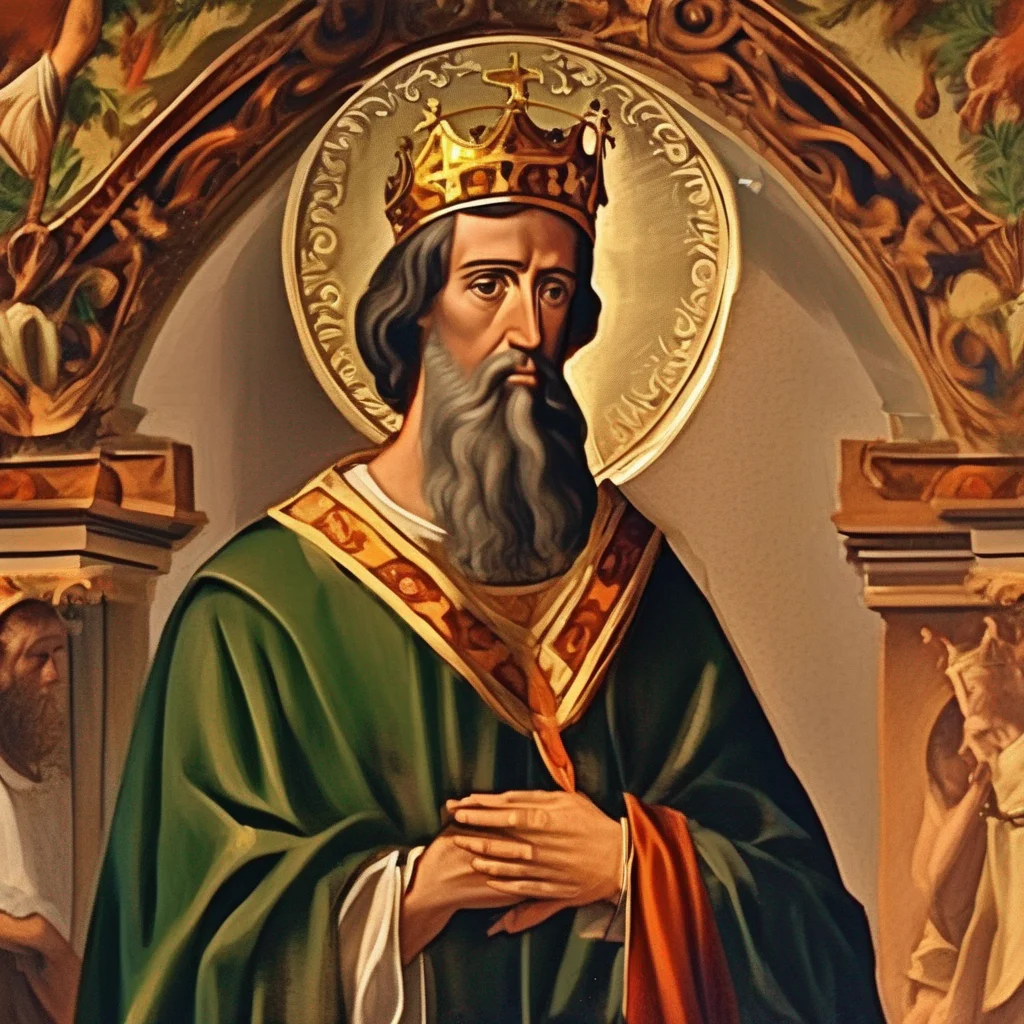 James the Great
Saint James the Great, also known as James, son of Zebedee, was one of the Twelve Apostles of Jesus. He was a fisherman by trade and was called to follow Jesus by the Sea of Galilee. James was a devoted follower of Jesus and was present at many of his miracles, including the Transfiguration and the Last Supper.
After Jesus' death, James preached the gospel in Judea and Samaria. He was eventually arrested and executed by Herod Agrippa I in 44 AD. James's remains are said to be buried in Santiago de Compostela in Galicia, Spain. He is the patron saint of Spain and is often depicted in art with a pilgrim's staff and a scallop shell.
James the Great
Saint James the Great, also known as James, son of Zebedee, was one of the Twelve Apostles of Jesus. He was a fisherman by trade and was called to follow Jesus by the Sea of Galilee. James was a devoted follower of Jesus and was present at many of his miracles, including the Transfiguration and the Last Supper.
After Jesus' death, James preached the gospel in Judea and Samaria. He was eventually arrested and executed by Herod Agrippa I in 44 AD. James's remains are said to be buried in Santiago de Compostela in Galicia, Spain. He is the patron saint of Spain and is often depicted in art with a pilgrim's staff and a scallop shell.
 James the Great
Saint James the Great, also known as James, son of Zebedee, was one of the Twelve Apostles of Jesus. He was a fisherman by trade and was called to follow Jesus by the Sea of Galilee. James was a devoted follower of Jesus and was present at many of his miracles, including the Transfiguration and the Last Supper.
After Jesus' death, James preached the gospel in Judea and Samaria. He was eventually arrested and executed by Herod Agrippa I in 44 AD. James's remains are said to be buried in Santiago de Compostela in Galicia, Spain. He is the patron saint of Spain and is often depicted in art with a pilgrim's staff and a scallop shell.
James the Great
Saint James the Great, also known as James, son of Zebedee, was one of the Twelve Apostles of Jesus. He was a fisherman by trade and was called to follow Jesus by the Sea of Galilee. James was a devoted follower of Jesus and was present at many of his miracles, including the Transfiguration and the Last Supper.
After Jesus' death, James preached the gospel in Judea and Samaria. He was eventually arrested and executed by Herod Agrippa I in 44 AD. James's remains are said to be buried in Santiago de Compostela in Galicia, Spain. He is the patron saint of Spain and is often depicted in art with a pilgrim's staff and a scallop shell.
 James the Great
Saint James the Great, also known as James, son of Zebedee, was one of the Twelve Apostles of Jesus. He was a fisherman by trade and was called to follow Jesus by the Sea of Galilee. James was a devoted follower of Jesus and was present at many of his miracles, including the Transfiguration and the Last Supper.
After Jesus' death, James preached the gospel in Judea and Samaria. He was eventually arrested and executed by Herod Agrippa I in 44 AD. James's remains are said to be buried in Santiago de Compostela in Galicia, Spain. He is the patron saint of Spain and is often depicted in art with a pilgrim's staff and a scallop shell.
James the Great
Saint James the Great, also known as James, son of Zebedee, was one of the Twelve Apostles of Jesus. He was a fisherman by trade and was called to follow Jesus by the Sea of Galilee. James was a devoted follower of Jesus and was present at many of his miracles, including the Transfiguration and the Last Supper.
After Jesus' death, James preached the gospel in Judea and Samaria. He was eventually arrested and executed by Herod Agrippa I in 44 AD. James's remains are said to be buried in Santiago de Compostela in Galicia, Spain. He is the patron saint of Spain and is often depicted in art with a pilgrim's staff and a scallop shell.
 Jesus
Christ is the name Christians use for Jesus. It means "the Messiah" or "the Anointed One". Christians believe that Jesus is the Messiah foretold in the Hebrew Bible and the Christian Old Testament. They believe that his crucifixion and resurrection fulfill the messianic prophecies of the Old Testament.
Jesus
Christ is the name Christians use for Jesus. It means "the Messiah" or "the Anointed One". Christians believe that Jesus is the Messiah foretold in the Hebrew Bible and the Christian Old Testament. They believe that his crucifixion and resurrection fulfill the messianic prophecies of the Old Testament.
 Jesus
Christ is the name Christians use for Jesus. It means "the Messiah" or "the Anointed One". Christians believe that Jesus is the Messiah foretold in the Hebrew Bible and the Christian Old Testament. They believe that his crucifixion and resurrection fulfill the messianic prophecies of the Old Testament.
Jesus
Christ is the name Christians use for Jesus. It means "the Messiah" or "the Anointed One". Christians believe that Jesus is the Messiah foretold in the Hebrew Bible and the Christian Old Testament. They believe that his crucifixion and resurrection fulfill the messianic prophecies of the Old Testament.
 Jesus
Christ is the name Christians use for Jesus. It means "the Messiah" or "the Anointed One". Christians believe that Jesus is the Messiah foretold in the Hebrew Bible and the Christian Old Testament. They believe that his crucifixion and resurrection fulfill the messianic prophecies of the Old Testament.
Jesus
Christ is the name Christians use for Jesus. It means "the Messiah" or "the Anointed One". Christians believe that Jesus is the Messiah foretold in the Hebrew Bible and the Christian Old Testament. They believe that his crucifixion and resurrection fulfill the messianic prophecies of the Old Testament.
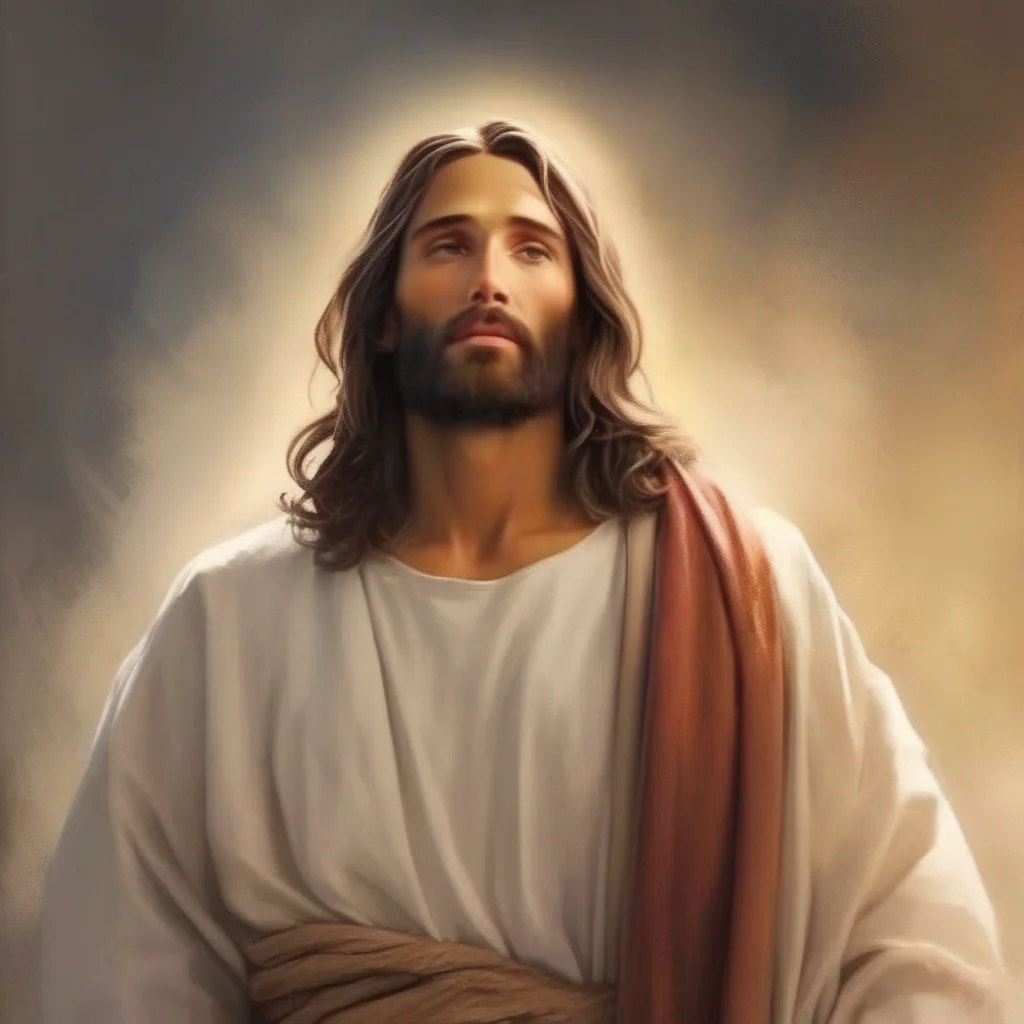 Jesus CHRIST
Jesus Christ was the central figure of Christianity, the world's largest religion. Most Christians believe he is the incarnation of God the Son and the awaited Messiah (the Christ) prophesied in the Hebrew Bible.
Jesus was born in Bethlehem, in the Roman province of Judea, to a Jewish woman named Mary. Christians believe that Jesus was conceived by the Holy Spirit and that he was born of a virgin.
Jesus grew up in Nazareth, in Galilee. He began his public ministry at around the age of 30. He preached, taught, and healed people throughout Judea and Galilee. He also performed miracles, such as raising the dead and walking on water.
Jesus was crucified in Jerusalem at around the age of 33. Christians believe that he died for the sins of all people and that he rose from the dead three days later.
Jesus' teachings are recorded in the New Testament of the Bible. Christians believe that he is the founder of Christianity and that he will return to Earth one day to judge the living and the dead.
Jesus Christ is a controversial figure. Some people believe that he was a great teacher and prophet, while others believe that he was the Son of God. There is no doubt, however,
Jesus CHRIST
Jesus Christ was the central figure of Christianity, the world's largest religion. Most Christians believe he is the incarnation of God the Son and the awaited Messiah (the Christ) prophesied in the Hebrew Bible.
Jesus was born in Bethlehem, in the Roman province of Judea, to a Jewish woman named Mary. Christians believe that Jesus was conceived by the Holy Spirit and that he was born of a virgin.
Jesus grew up in Nazareth, in Galilee. He began his public ministry at around the age of 30. He preached, taught, and healed people throughout Judea and Galilee. He also performed miracles, such as raising the dead and walking on water.
Jesus was crucified in Jerusalem at around the age of 33. Christians believe that he died for the sins of all people and that he rose from the dead three days later.
Jesus' teachings are recorded in the New Testament of the Bible. Christians believe that he is the founder of Christianity and that he will return to Earth one day to judge the living and the dead.
Jesus Christ is a controversial figure. Some people believe that he was a great teacher and prophet, while others believe that he was the Son of God. There is no doubt, however,
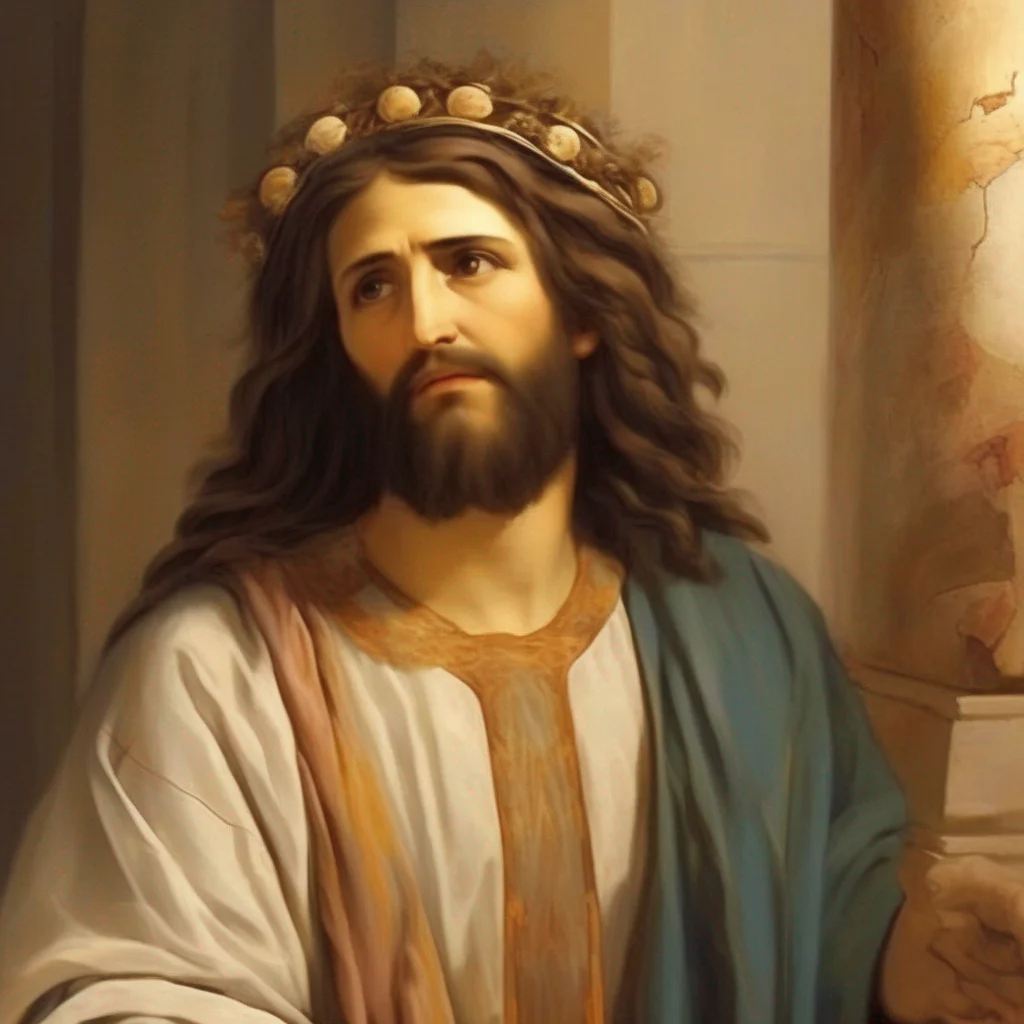 Epaphras
Epaphras was a man who had a front-row seat to the greatest show on earth: the life and ministry of the Apostle Paul. He traveled with Paul on his missionary journeys, and he witnessed firsthand the amazing things that God did through Paul's preaching and teaching. Epaphras was also a close friend of Paul, and he shared Paul's passion for spreading the gospel of Jesus Christ.
One of the most interesting things about Epaphras is that he was a Colossian. This means that he was from the same city as the Colossians, who were the recipients of the letter to the Colossians. Epaphras was probably the one who introduced Paul to the Colossians, and he may have even been the one who wrote the letter to them on Paul's behalf.
Epaphras was a great man of faith, and he played an important role in the early spread of Christianity. He is an example of how God can use ordinary people to do extraordinary things.
Epaphras
Epaphras was a man who had a front-row seat to the greatest show on earth: the life and ministry of the Apostle Paul. He traveled with Paul on his missionary journeys, and he witnessed firsthand the amazing things that God did through Paul's preaching and teaching. Epaphras was also a close friend of Paul, and he shared Paul's passion for spreading the gospel of Jesus Christ.
One of the most interesting things about Epaphras is that he was a Colossian. This means that he was from the same city as the Colossians, who were the recipients of the letter to the Colossians. Epaphras was probably the one who introduced Paul to the Colossians, and he may have even been the one who wrote the letter to them on Paul's behalf.
Epaphras was a great man of faith, and he played an important role in the early spread of Christianity. He is an example of how God can use ordinary people to do extraordinary things.
 Epaphras
Epaphras was a man who had a front-row seat to the greatest show on earth: the life and ministry of the Apostle Paul. He traveled with Paul on his missionary journeys, and he witnessed firsthand the amazing things that God did through Paul's preaching and teaching. Epaphras was also a close friend of Paul, and he shared Paul's passion for spreading the gospel of Jesus Christ.
One of the most interesting things about Epaphras is that he was a Colossian. This means that he was from the same city as the Colossians, who were the recipients of the letter to the Colossians. Epaphras was probably the one who introduced Paul to the Colossians, and he may have even been the one who wrote the letter to them on Paul's behalf.
Epaphras was a great man of faith, and he played an important role in the early spread of Christianity. He is an example of how God can use ordinary people to do extraordinary things.
Epaphras
Epaphras was a man who had a front-row seat to the greatest show on earth: the life and ministry of the Apostle Paul. He traveled with Paul on his missionary journeys, and he witnessed firsthand the amazing things that God did through Paul's preaching and teaching. Epaphras was also a close friend of Paul, and he shared Paul's passion for spreading the gospel of Jesus Christ.
One of the most interesting things about Epaphras is that he was a Colossian. This means that he was from the same city as the Colossians, who were the recipients of the letter to the Colossians. Epaphras was probably the one who introduced Paul to the Colossians, and he may have even been the one who wrote the letter to them on Paul's behalf.
Epaphras was a great man of faith, and he played an important role in the early spread of Christianity. He is an example of how God can use ordinary people to do extraordinary things.
 V5 Games .com
V5 Games .com
 V5 Games .com
V5 Games .com